#cleantransport
Text
Why Electric Cars Are The Future Of Transport : Easy Guide 2024
Using this simple 2024 guide, you'll learn why electric vehicles are going to change transportation. From environmental benefits to technological improvements, see how electric vehicles are impacting the future of mobility. Learn about the major features, charging infrastructure and economic benefits driving the transition to sustainable mobility. Stay on top of the competition with the prediction of electric vehicles.

#electriccars#electricridelab#transportation#FutureOfTransport#GreenTransportation#SustainableMobility#EVs#CleanEnergy#ElectricVehicleRevolution#ClimateAction#GoGreen#EcoFriendly#CleanTransport#ElectricMobility
0 notes
Text
Global Electric Scooters Market and Its Growth Trajectory
The global electric scooters market size is expected to reach USD 78.65 billion by 2030, registering a CAGR of 9.9% from 2023 to 2030, according to a study conducted by Grand View Research, Inc. Increasing demand for the air combating, fuel-economic high-performance vehicles is expected to fuel the growth of the industry. In addition, a growing number of government initiatives to increase the adoption of EVs, automobile manufacturers’ investment in the development of battery charging infrastructure, and rising disposable income in developing nations are expected to drive the growth further. Moreover, the ease of maneuverability and extensive driving agility of e-scooters are expected to boost their demand.
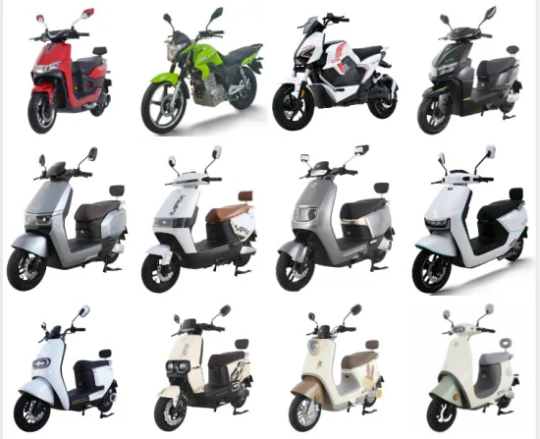
Electric Scooters Market Report Highlights
The personal end-use segment is expected to register the fastest growth rate from 2023 to 2030. This growth can be attributed to significant demand for e-scooters
Based on battery, the lithium-ion segment dominated the industry in 2022 due to benefits, such as low cost and robustness
Asia Pacific is expected to be the largest as well as the fastest-growing regional market during the forecast period
This is owing to significant investments in vehicle charging infrastructure and government subsidies for battery-powered scooters
For More Details or Sample Copy please visit link @: Electric Scooters Market Report
Key players are focusing on improving quality, enhancing performance, comfort, and safety, and lowering the cost of maintenance. In addition, prominent players are undertaking strategic steps to expand their customer base in the international market. They are focusing on launching a range of e-scooters. For instance, Gogoro, Inc., and KYMCO expanded their reach in other regions to capture the benefit of the untapped market. Furthermore, prominent players, such as GenZe by Mahindra, YAMAHA Motor Pvt. Ltd., Vässla Electric Scooters., and PURE EV, have invested in installing charging systems across various countries and are offering swappable battery systems in their e-scooter variants.
The Asia Pacific region is expected to witness the fastest CAGR over the forecast period due to increasing government focus on replacing the existing fleet with EVs in developing economies, such as China, India, and ASEAN countries. Moreover, government and e-scooter manufacturers are investing in developing the public charging infrastructure, which will encourage consumers to shift to e-scooters over their counterparts. The governments in European countries have been providing subsidies to drive the sales of battery-powered two-wheelers. These initiatives are anticipated to become more robust with increasing gasoline prices.
#ElectricScooters#EcoMobility#UrbanTransport#SustainableMobility#MicroMobility#GreenCommute#FutureOfTransport#ElectricTransportation#SmartCities#LastMileSolution#ZeroEmission#SharedMobility#ElectricMobility#RideElectric#ScooterSharing#CleanTransport#TechInnovation#UrbanMobility#ElectricVehicle#AlternativeTransport
0 notes
Photo

American Riviera Tours offers Advanced Clean Transportation Expo attendees special transfer including LA City tour from and to LAX https://posts.gle/zUDBxP #cleantransport #electricvehicle #ebike #electricbike #ev #cummins #mack #climatechange #sysco #navistar #daimlertruck #conversionkit #ecofriendly #penske #electrify #shell #cleanenergy #gogreen #hyundai #actexpo #transport #electric #actconference #longbeach #kenworth #peterbilt #emtb #electricfatbike #electricbicycles #meritor https://www.instagram.com/p/Cc1FAFWPbNB/?igshid=NGJjMDIxMWI=
#cleantransport#electricvehicle#ebike#electricbike#ev#cummins#mack#climatechange#sysco#navistar#daimlertruck#conversionkit#ecofriendly#penske#electrify#shell#cleanenergy#gogreen#hyundai#actexpo#transport#electric#actconference#longbeach#kenworth#peterbilt#emtb#electricfatbike#electricbicycles#meritor
0 notes
Text

#ElectricThreeWheelers#AsiaPacific#GreenTransportation#ElectricMobility#SustainableTransport#CleanEnergy#EcoFriendly#ElectricVehicles#RenewableEnergy#ZeroEmission#FutureMobility#ElectricTransportation#CleanTransportation#UrbanMobility
0 notes
Text
Hydrogen Fuel Cell Vehicle Market Worldwide Demand and Growth Analysis Report 2024-2030

The Hydrogen Fuel Cell Vehicle Market Research Report 2024 begins with an overview of the market and offers throughout development. It presents a comprehensive analysis of all the regional and major player segments that gives closer insights upon present market conditions and future market opportunities along with drivers, trending segments, consumer behaviour, pricing factors and market performance and estimation and prices as well as global predominant vendor’s information. The forecast market information, SWOT analysis, Hydrogen Fuel Cell Vehicle Market scenario, and feasibility study are the vital aspects analysed in this report.
The Hydrogen Fuel Cell Vehicle Market is expected to grow at 59.40% CAGR from 2023 to 2030. It is expected to reach above USD 27.09 Billion by 2030 from USD 0.40 Billion in 2023.
Access Full Report:
https://exactitudeconsultancy.com/reports/13965/hydrogen-fuel-cell-vehicle-market/
#FuelCellVehicle#CleanTransportation#HydrogenTechnology#ZeroEmission#RenewableEnergy#GreenMobility#FuelCellCars#HydrogenPower#SustainableTransport#AlternativeFuel#FutureOfTransport#EnergyTransition#HydrogenEconomy#FuelCellTechnology#TransportationInnovation#EcoFriendlyVehicles#ClimateAction#HydrogenInfrastructure#HydrogenVehicle
0 notes
Text
Ko-Solar Web: https://www.ko-solar.com/
Facebook: https://www.facebook.com/solarsoundbarrier/
Instagram: https://www.instagram.com/ko.solar/
LinkedIn: https://www.linkedin.com/company/ko-solar/
Threads: https://www.threads.net/@ko.solar
Tumblr: https://www.tumblr.com/ko-solar
Twitter: https://twitter.com/SolarSoundWall
TikTok: https://www.tiktok.com/@ko.solar
YouTube: https://www.youtube.com/ch
Google+: https://www.google.com/search?q=Ko-Solar&ludocid=9839316519142606543&lpsid=4632890026087517204&source=sh/x/localposts#lpstate=pid:4632890026087517204
#CleanTransportation#RenewableEnergy#Sustainability#CleanEnergy#KoSolar#transportation#solarenergy#solarpower#energy#greenenergy#GreenTransportation#highway#road#railroad#highwaysolar#railroadsolar#solarbarrier#solarsoundbarrier#solarnoisebarrier#energyhub#EVcharging#grid#offgrid#highwaysolarenergy#transportationbasedsolar#Ko-Solar#Valentine's day#Valentine'sday#environment#Nature
0 notes
Text
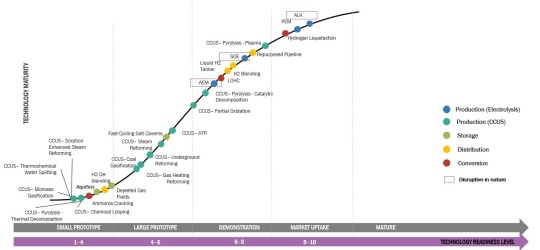
What is the Future Scope of Hydrogen Vehicles?
Hydrogen Vehicles Future Scope
Future hydrogen vehicles, sometimes referred to as hydrogen fuel cell vehicles, have a number of exciting prospects.
The potential and opportunities for hydrogen fuel cell-powered vehicles in the future are referred to as the "future scope of hydrogen vehicles." Utilizing fuel cells, hydrogen gas is converted into energy for use in hydrogen vehicles. The only waste of this process is water vapor, which powers an electric motor. Technology developments, market expansion, environmental effects, and policy support are just a few of the elements that make up the future scope.
The following salient features point to a promising future for hydrogen-powered vehicles:
Zero-Emission Transportation:
The transition to zero-emission transportation is possible using hydroplanes. Hydrogen vehicles have the potential to significantly contribute to the decarbonization of the transportation sector as efforts are made to mitigate climate change and reduce greenhouse gas emissions.
Vehicles powered by hydrogen have no tailpipe emissions, in contrast to those powered by traditional internal combustion engines. Since water vapor is the only consequence of hydrogen fuel cell technology, these devices are environmentally benign and help to improve air quality.
Long Driving Ranges and Quick Refueling:
Unlike battery electric cars (BEVs), which sometimes cause range anxiety, hydrogen vehicles have lengthy driving ranges that are equivalent to those of conventional automobiles. Applications like long-distance driving, heavy-duty transportation, and public transportation benefit greatly from this.
The time required to refuel a hydrogen car is comparable to that of a gasoline or diesel vehicle. Filling up a hydrogen tank usually just takes a few minutes, providing drivers with a familiar and simple refueling experience.
Energy Storage and Grid Balancing:
Vehicles powered by hydrogen may be used as energy storage devices. In times when renewable energy is generated in excess, hydrogen can be created by electrolysis and kept in the car's tank. The fuel cell may then use the stored hydrogen to turn it back into electricity, giving rise to a power source that can be used to satisfy peak demand for electricity or supplied back into the grid.
The intermittent nature of renewable energy sources can be counterbalanced by hydrogen vehicles' energy storage capacity, which also helps create a more resilient and stable energy grid.
Diversification of Energy Sources:
The transportation industry can diversify its energy sources thanks to hydrogen-powered vehicles. Numerous feedstocks, including renewable energy sources like solar, wind, and hydroelectric power, can be used to create hydrogen. The ability to produce hydrogen with flexibility makes the energy system more robust and sustainable.
The transportation industry may utilize hydrogen as fuel to lessen its dependency on fossil fuels, improving energy security and mitigating the environmental effects of extracting and burning conventional fuels.
Continued Technological Advancements:
Research and development in hydrogen fuel cell technologies are continuing. The efficiency, robustness, and affordability of fuel cell systems are being worked on in order to increase the competitiveness of hydrogen vehicles in the market.
The cost of fuel cell systems and hydrogen infrastructure is anticipated to drop as technology advances and economies of scale are reached, increasing consumer access to hydrogen vehicles.
Government Support and Policies:
Through funding, incentives, and legislation, numerous governments worldwide are actively promoting the development and use of hydrogen-powered cars. These programs are intended to promote the installation of hydrogen infrastructure, like as refueling stations, and hasten the expansion of the hydrogen economy.
As an illustration, nations like China, Japan, Germany, South Korea, and South Korea have put in place bold plans and financial assistance to encourage the use of hydrogen vehicles, the construction of infrastructure, and R&D endeavors.
Industry Collaboration and Investment:
Significant investments in hydrogen car development and infrastructure are being made by major automakers, energy firms, and technology providers. These stakeholders are working together to promote innovation, advance technology, and increase the number of hydrogen-powered vehicles on the road.
To promote the expansion of hydrogen-powered vehicles, manufacturers and developers of hydrogen infrastructure are collaborating to build a strong network of hydrogen refueling stations. One example of this is the partnership between Toyota and Air Liquide.
Growing Infrastructure Network:
The widespread use of hydrogen-powered vehicles depends on the development of infrastructure for hydrogen refueling. More refueling stations are being built to meet the demand for vehicle recharging as the market for hydrogen vehicles grows.
Significant progress has been made in developing a network of hydrogen refueling stations by nations like Germany and Japan, and comparable initiatives are being carried out in North America and Europe.
Technology Advancements:
The advancement of fuel cell technology, hydrogen storage, and overall vehicle economy are the main topics of ongoing research and development. The goal of fuel cell technology advancements is to improve performance, lower costs, and increase durability in order to increase the competitiveness of hydrogen vehicles.
To increase onboard hydrogen storage capacity and safety, advances in hydrogen storage systems, including as solid-state hydrogen storage and improved composite materials, are being investigated.
Synergies with Renewable Energy:
The potential applications of hydrogen vehicles in the future are enhanced by the expansion of renewable energy sources like solar and wind power. Hydrogen production can be achieved through electrolysis with surplus renewable energy, establishing a mutually beneficial partnership between the two processes.
By combining the production of hydrogen with renewable energy, green hydrogen can be used, which improves the sustainability and environmental advantages of hydrogen vehicles.
International Collaboration and Standardization:
To provide uniform laws, guidelines, and safety requirements for hydrogen-powered vehicles and infrastructure, international cooperation and standardization initiatives are in progress. These programs support stakeholder confidence, harmonization, and interoperability, which encourages the widespread use of hydrogen cars.
These are the key elements defining the future scope of hydrogen vehicles.
With the convergence and advancement of these components, the potential applications of hydrogen cars appear bright. In the upcoming years, hydrogen vehicles are anticipated to play a major role in attaining sustainable, zero-emission transportation and lowering carbon emissions with sustained support, technological improvements, infrastructure development, and stakeholder participation.
Read More - https://www.marketsandmarkets.com/industry-practice/hydrogen/hydrogen-vehicles
#HydrogenFuture#CleanTransportation#HydrogenEconomy#GreenMobility#ZeroEmissions#FuelCellTech#SustainableTransport
0 notes
Text
#EVNovember2023#ElectricVehicleSales#GreenDriveNovember#SustainableMobility#EVRevolution#CleanTransportation#FutureOfMobility#ZeroEmissionNovember#DrivingChange#EcoFriendlyJourney
0 notes
Text
Advancing the Electric Vehicle Industry with High-Performance Adhesives
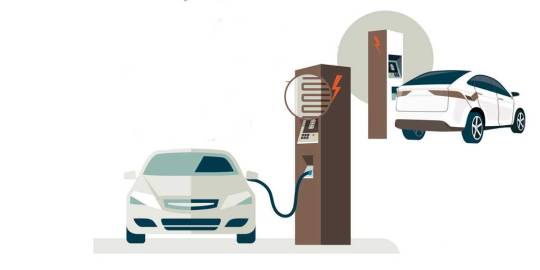
Electric vehicles (EVs) are setting the standard to determine how transportation will develop in the future as the automotive sector undergoes a dramatic transition. Vehicle engineering and design have undergone tremendous change as a result of the move towards greener and more sustainable mobility, and adhesives—a small but essential component—have played a key part in this development. This essay will examine the reasons for the fast rising importance of the electric vehicle adhesives market to the development of EVs.
The Silent Heroes of EVs
In the world of electric vehicles, the spotlight often shines on battery technology, range, charging infrastructure, and autonomy. Yet, one of the unsung heroes of EVs is the adhesives that hold these advanced machines together. These high-performance adhesives serve a multitude of functions that directly contribute to the success of EVs, and their importance cannot be overstated.
Reducing Weight, Enhancing Efficiency
Adhesives in the Electric vehicle Market serve as more than just glue; they are a means to reduce weight and enhance overall efficiency. Weight reduction is a primary focus for EV manufacturers as it directly impacts the vehicle's range and energy consumption. The use of lightweight materials, combined with high-strength adhesives, allows for the creation of more energy-efficient EVs.
Enhancing Structural Integrity
Electric vehicles often feature unconventional designs to accommodate their battery packs and other key components. Adhesives provide structural integrity and play a crucial role in bonding dissimilar materials, such as metals and composites, ensuring a strong and durable vehicle structure. This structural integrity enhances both safety and performance.
Sealing Out Environmental Challenges
Electric vehicles operate in diverse environmental conditions, from extreme temperatures to moisture and road salt. Adhesives are used to seal and protect sensitive electronic components, batteries, and wiring harnesses from these external factors, ensuring the reliability of the vehicle's electric systems.
Reducing Noise and Vibration
Electric vehicles are celebrated for their quiet operation. Adhesives help maintain this serene environment by reducing noise and vibration within the vehicle. This not only enhances the driver and passenger experience but also contributes to the overall perception of quality.
A Sustainable Solution
In addition to their functional benefits, adhesives in the Electric Vehicle Adhesives Market are aligning with the industry's push toward sustainability. Many of these adhesives are produced using environmentally friendly processes and are designed to have minimal environmental impact. As the world increasingly values eco-consciousness, EV manufacturers are making informed choices to reduce their carbon footprint, even in the materials they use.
Download PDF Brochure :
#ElectricVehicleMarket#EVIndustry#CleanTransportation#Sustainability#FutureOfMobility#ElectricCars#GreenTech#AutomotiveInnovation#EVAdoption#Electrification#GreenDriving
0 notes
Text
We're excited to be at the forefront of shaping a sustainable transportation future for Michigan! We are happy to announce that we are now part of the Clean Fuels Michigan!
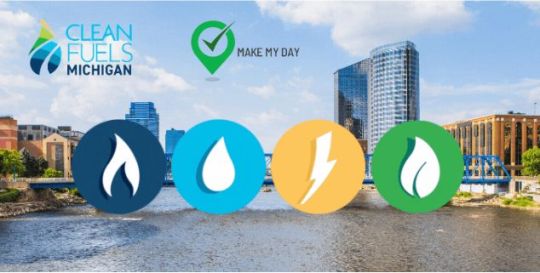
Clean Fuels Michigan's mission is to expedite the transition to clean transportation within the state of Michigan. They are staunch advocates for a diverse range of alternative fuels, including biofuels, hydrogen, propane, natural gas, and, of course, electric vehicles.
To learn more about our involvement and commitment to this exciting initiative, please visit our profile on the Clean Fuels Michigan official website: https://lnkd.in/drn3WTcj
Together with Clean Fuels Michigan, we're making a significant impact on Michigan's sustainable transportation landscape.
Tim KustkaNisan KatzCnaan AvivHanan Klainer
#Michigan#Fuel#Cleanfuel#USA#Cleantransportation#electricvehicles#EV#CleanFuelsMichigan#fleetelectrification#cleanenergyfuture#cleantech#sustainableenergy#esg#cleanfuelsmichigan#EVLife#MakeMyDay#EVapp#ElectrifyYourFleet#SmartSolutions#Fleetanalyzer#fleet#Electrification#electricfleet#SmartFleetAnalyzer#data#CO2#savemoney#EVindustry#EVCharging#app
0 notes
Text
NVl EV | Redefining Sustainable City Travel and Beyond | Paragon Universe
Explore the future of sustainable city travel and beyond with NVl EV in the Paragon Universe. 🌍⚡ Discover innovative electric vehicles designed to redefine urban mobility while minimizing environmental impact. Join us on a journey towards cleaner, smarter, and more connected transportation options. #NVlEV #SustainableMobility #UrbanTravel #ElectricVehicles #GreenTech #ParagonUniverse #Innovation #CleanTransportation #FutureOfMobility #ConnectedCars
#NVlEV#SustainableMobility#UrbanTravel#ElectricVehicles#GreenTech#ParagonUniverse#Innovation#CleanTransportation#FutureOfMobility#ConnectedCars
0 notes
Video
youtube
Proterra: The Tesla of Electric Buses Goes Bankrupt
#youtube#greentech ecofriendly futureoftransportation renewableenergy urbanmobility publictransport innovation electricmobility CleanTransport chargi
0 notes
Text
Electric Vehicle Charging Market : Unveiling the Latest Innovations, Challenges, and Opportunities
The global EV charging infrastructure market size is anticipated to reach USD 125.39 billion by 2030, expanding at a CAGR of 25.4% from 2024 to 2030, according to a new report by Grand View Research, Inc. The growth of the electric vehicle charging infrastructure (EVCI) market is attributed to a growing consumer base adopting electric vehicles. This shift is fueled by eco-friendly choices, rising fuel expenses, government incentives, and reduced ownership costs throughout the vehicle's lifespan.

EV Charging Infrastructure Market Report Highlights
In terms of charger type, the fast charger segment dominated the market in 2023. The rising preference for EVs among consumers seeking more convenient and efficient vehicle charging methods is propelling the growth of this segment
In terms of connector, the CHAdeMO segment is expected to grow at a significant CAGR during the forecast period. The CHAdeMO connector’s capacity to provide a DC fast charging solution, enabling swift EV battery recharge, acts as a significant contributor to segment growth
In terms of level of charging, the level 2 segment dominated the market in 2023. The growth of level 2 charging networks, especially in urban areas and along major U.S. highways, significantly drives segment expansion. With increasing electric vehicle adoption, numerous municipalities and businesses are investing in level 2 charging infrastructure to retain and attract EV drivers
In terms of connectivity, the non-connected charging stations segment led the market in 2023. The growing adoption of stand-alone chargers by small businesses, private individuals, and municipalities is a major factor contributing to segment growth
In terms of application, the commercial segment held a major revenue share in 2023. Increasing number of EV charging stations in commercial spaces and rising government funding and initiatives for installing publicly accessible EV charging stations are major factors behind segment growth
The Asia Pacific region dominated the market in 2023. Stringent vehicle emission standards and a strong emphasis on electric vehicle research and development act as key drivers propelling regional market growth for electric vehicle (EV) charging infrastructure
In September 2022, Schneider Electric launched the EVlink Home Smart Charger to power EVs at home. The charger includes innovative features to make at-home charging simpler to install and more cost-effective to use. Such initiatives are increasing the adoption of electric vehicle charging infrastructures
For More Details or Sample Copy please visit link @: Electric Vehicle (EV) Charging Infrastructure Market Report
An increasing interest in electric vehicles is amplifying the need for sufficient charging infrastructure, driving market growth. Several electric vehicle manufacturers, including Kia Motors, Volvo, Ford, and Mercedes-Benz, are partnering with charging infrastructure providers to ensure convenient access to charging stations. As an example, in November 2020, ChargePoint, Inc. announced its collaboration with Volvo Car USA LLC to deliver a smooth charging experience for Volvo drivers. ChargePoint, Inc. supports Volvo owners with Home Flex home chargers, allowing them to conveniently charge their cars at home.
Moreover, Ecotap BV, Delta Electronics, and Enel X, among others, are focusing on the development of solar-powered electric vehicle charging stations. For instance, within the Honda SmartCharge program, Enel X is engaged in developing a charging station powered by solar energy in Hawaii, the U.S., through collaboration with the Hawaiian Electric Company, Inc.
Several companies are working to enhance electric vehicle supply equipment (EVSE) to improve convenience for long-distance travel. Manufacturers such as Tesla, Inc. and Nissan are focusing on ensuring compatibility of their electric vehicles with public charging networks. For instance, in February 2023, in a move to bolster EV adoption in the U.S., the White House collaborated with Tesla Inc. to increase the availability of EV charging infrastructure across the U.S. As part of the collaboration, Tesla Inc. has pledged to make at least 7,500 of its chargers available to all types of EVs by the end of 2024.
The significant growth is majorly owing to the rising initiatives undertaken by both private as well as public sectors to encourage the population to switch to electric vehicles. These initiatives have stimulated the purchase of EVs and have concurrently raised consumer awareness about the advantages of such vehicles. Therefore, the demand for EV charging infrastructure is anticipated to grow significantly.
For instance, in the U.S., the Washington State Department of Transportation has collaborated with the Oregon Department of Transportation to construct the West Coast Electric Highway (WCEH), which includes 57 EV charging stations across Washington and Oregon. Moreover, multiple governments are collaboratively developing intercontinental networks of highway charging stations.
The rising demand for EVs is owing to the increasing awareness of environmental sustainability and the strict emissions regulations enforced by governments. As private companies are focusing on innovating electric vehicle chargers and charging stations, governments are partnering with these firms to deploy EV charging infrastructure. In addition, technologies, such as near-field communication (NFC) and Radio Frequency Identification (RFID), have enabled the installation of interactive, self-operated, and kiosk-based charging stations within highway charging stations. Numerous private organizations are investing in the development of electric vehicle charging stations along highways. All these factors are propelling the demand for highway EV charging stations.
#EVCharging#ChargingInfrastructure#ElectricVehicles#CleanTransportation#SustainableMobility#RenewableEnergy#EVChargers#GreenTech#FutureOfMobility#ZeroEmission#ChargingNetwork#ElectricCar#TransportationElectrification#InfrastructureInvestment#EnergyTransition#MobilitySolutions#GreenInfrastructure#UrbanMobility
0 notes
Text
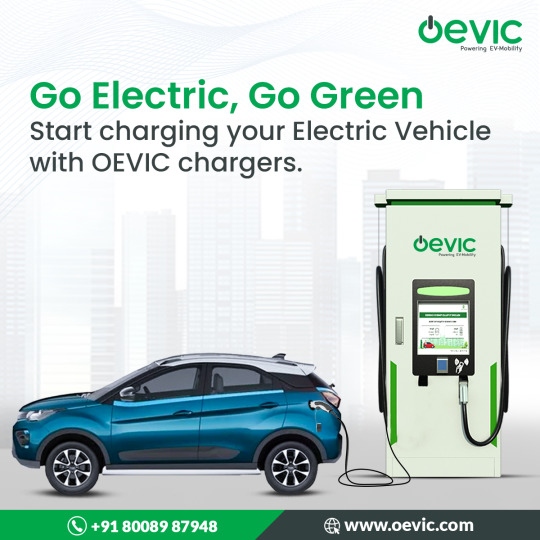
Go Electric, Go Green
Start charging your Electric Vehicle with OEVIC chargers.
For EV Charging Solutions Contact Us!
📱+91 8008987948
🌐 oevic.com
#goelectricgogreen#oevicchargers#electricvehicles#evcharging#evchargingstations#greenenergy#sustainabletransportation#cleantransportation#futureofmobility#electricvehiclerevolution
0 notes
Text
Electric vehicles (EVs) have gained significant attention as a sustainable mode of transportation, and their success relies heavily on advancements in battery technology. In this blog, we explore the evolution of electric vehicle batteries, from lead-acid to lithium-ion, and delve into the components, manufacturing processes, and ongoing research that have made lithium-ion batteries the powerhouse of EVs. We also discuss alternative battery technologies, range optimization strategies, advancements in charging infrastructure, and exciting future prospects. Together, these innovations are driving the widespread adoption of EVs and paving the way for a cleaner and more connected transportation future.
#EVBatteryInnovations#SustainableTransportation#BatteryAdvancements#RangeOptimization#CleanTransportation#LithiumIonTechnology#ChargingInfrastructure#FutureofMobility#GreenTransportation#EcoFriendlyDriving
0 notes
Text
On-Board Charger Market Analysis 2024 Expectation Surges with Rising Demand, and Key Players to 2030

The qualitative report published by Exactitude Consultancy research on the “On-Board Charger Market offers an in-depth examination of the current trends, latest expansions, conditions, market size, various drivers, limitations, and key players along with their profile details. The On-Board Charger market report offers the historical data for 2018 to 2023 and also makes available the forecast data from the year 2024 to 2030 which is based on revenue. With the help of all this information research report helps the Market contributors to expand their market positions. With the benefit of all these explanations, this market research report recommends a business strategy for present market participants to strengthen their role in the market. This report analyzes the impact of the Covid 19 pandemic on the On-Board Charger Market from a Global and Regional perspective.
The global On-Board Charger Market is estimated to increase at a 15.2% CAGR from 2024 to 2030, from USD 3.99 billion in 2023.
For The Full Report Click here:
https://exactitudeconsultancy.com/reports/13661/on-board-charger-market/
#ElectricVehicleCharger#EVChargingTechnology#ChargingInfrastructure#ElectricCarCharger#EVCharger#VehicleCharging#ChargerTechnology#ChargingStation#BatteryCharger#EVInfrastructure#EVChargingSystem#ElectricVehicleTechnology#GreenEnergy#SustainableMobility#CleanTransportation#EVAdoption#FutureOfMobility#RenewableEnergy
0 notes